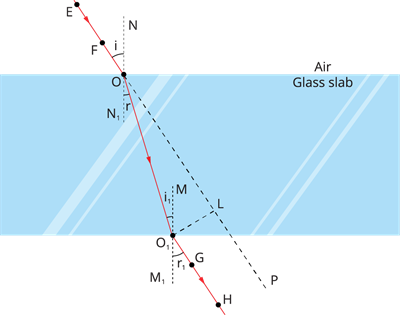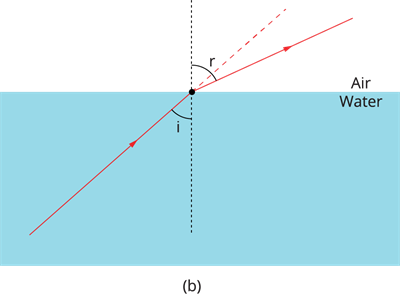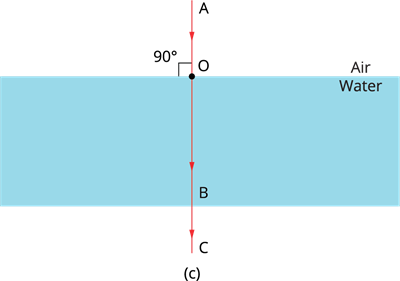
PUMPA - SMART LEARNING
எங்கள் ஆசிரியர்களுடன் 1-ஆன்-1 ஆலோசனை நேரத்தைப் பெறுங்கள். டாப்பர் ஆவதற்கு நாங்கள் பயிற்சி அளிப்போம்
Book Free DemoRefraction of light rays from a plane transparent surface:
We have laws of refraction, just like laws of reflection. The following properties will be used to learn the laws of refraction.
a) When a ray of light travels from an optically rarer medium to an optically denser medium, it bends towards the normal.

Rarer to denser medium
b) When a ray of light travels from an optically denser medium to an optically rarer medium, it bends away from the normal.

Denser medium to rarer medium
c) A ray of light incident normally on a denser medium goes without any deviation.

Light incident normally
The laws of refraction of light:
Laws of refraction, also known as Snell’s law of refraction, are given below as:
Laws of refraction, also known as Snell’s law of refraction, are given below as:
- The incident ray, the refracted ray and the normal to the interface of two transparent media at the point of incidence all lie in the same plane.
- The ratio of the sine of the angle of incidence to the sine of the angle of refraction is a constant for a light of given colour and the given pair of media. If \(i\) is the angle of incidence and \(r\) is the angle of refraction, then.
This constant is called the refractive index of the second medium with respect to the first medium. It is generally represented by the Greek letter \(µ\)(\(mew\)).
Note: The refractive index is the ratio of two similar quantities, so it has no unit. The speed of light in different media is also used to define a medium's refractive index.
In general,